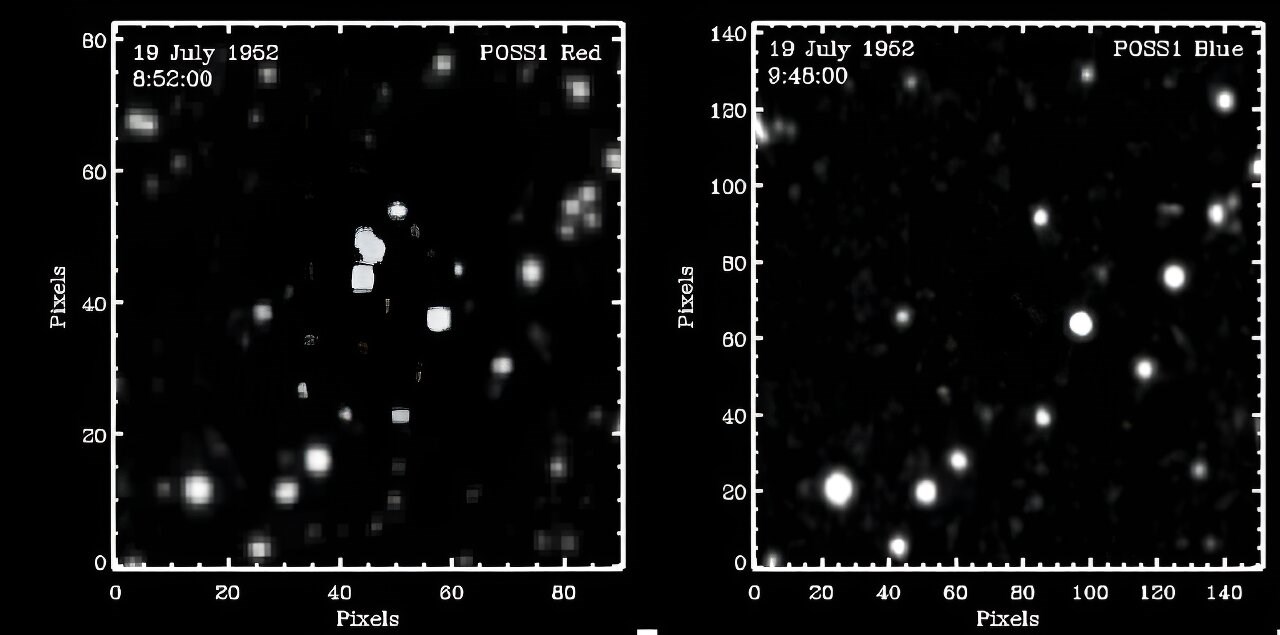[{“available”:true,”c_guid”:”92967646-f13f-40b9-929e-f049a82a08d1″,”c_author”:”HVG Könyvek”,”category”:”hvgkonyvek”,”description”:”David Goggins, akit az Outside magazin „Amerika legerősebb (valódi) emberének\” nevezett, világszerte keresett motivációs előadó. Az elmúlt években nagy cégek munkatársaival, sportolókkal és több százezer diákkal osztotta meg történetét. Az alábbiakban Nincs hatalmad felettem című könyvéből közlünk egy szerkesztett részletet.”,”shortLead”:”David Goggins, akit az Outside magazin „Amerika legerősebb (valódi) emberének\” nevezett, világszerte keresett…”,”id”:”20231105_David_Goggins_nincs_hatalmad_felettem_reszlet_konyv”,”image”:”https://api.hvg.hu/Img/ffdb5e3a-e632-4abc-b367-3d9b3bb5573b/92967646-f13f-40b9-929e-f049a82a08d1.jpg”,”index”:0,”item”:”ff3d487c-cf79-42c6-9a8c-eacf693414b4″,”keywords”:null,”link”:”/hvgkonyvek/20231105_David_Goggins_nincs_hatalmad_felettem_reszlet_konyv”,”timestamp”:”2023. november. 05. 19:15″,”title”:”David Goggins: Tudod, ki vagy valójában, és mire vagy képes?”,”trackingCode”:”RELATED”,”c_isbrandchannel”:false,”c_isbrandcontent”:false,”c_isbrandstory”:false,”c_isbrandcontentorbrandstory”:false,”c_isbranded”:false,”c_ishvg360article”:false,”c_partnername”:null,”c_partnerlogo”:”00000000-0000-0000-0000-000000000000″,”c_partnertag”:null},{“available”:true,”c_guid”:”0b711162-2235-4665-838c-9526c63f0011″,”c_author”:”MTI”,”category”:”gazdasag”,”description”:”Felújítás miatt nem indít és nem fogad vonatokat a Déli pályaudvar.”,”shortLead”:”Felújítás miatt nem indít és nem fogad vonatokat a Déli pályaudvar.”,”id”:”20231104_A_Deli_palyaudvaron_egesz_hetvegen_szunetel_a_vonatforgalom”,”image”:”https://api.hvg.hu/Img/ffdb5e3a-e632-4abc-b367-3d9b3bb5573b/0b711162-2235-4665-838c-9526c63f0011.jpg”,”index”:0,”item”:”c67b339c-3854-447c-9630-e092794ab6df”,”keywords”:null,”link”:”/gazdasag/20231104_A_Deli_palyaudvaron_egesz_hetvegen_szunetel_a_vonatforgalom”,”timestamp”:”2023. november. 04. 07:19″,”title”:”A Déli pályaudvaron egész hétvégén szünetel a vonatforgalom”,”trackingCode”:”RELATED”,”c_isbrandchannel”:false,”c_isbrandcontent”:false,”c_isbrandstory”:false,”c_isbrandcontentorbrandstory”:false,”c_isbranded”:false,”c_ishvg360article”:false,”c_partnername”:null,”c_partnerlogo”:”00000000-0000-0000-0000-000000000000″,”c_partnertag”:null},{“available”:true,”c_guid”:”8e96d483-e06d-413b-ac17-cb434ee3e317″,”c_author”:”OTP Bank Nyrt.”,”category”:”brandcontent”,”description”:”Az első lépést megtenni sokszor a legnehezebb, hiszen azt gondoljuk, hogy ha messze a kitűzött cél, akkor már elindulni sem érdemes. Ez azonban téves elképzelés: ha a saját tempónkban haladunk, akkor erőfeszítéseinknek meglesz az eredménye, legyen szó akár tanulásról, akár egy vágyott sportteljesítmény eléréséről vagy épp a megtakarításról.”,”shortLead”:”Az első lépést megtenni sokszor a legnehezebb, hiszen azt gondoljuk, hogy ha messze a kitűzött cél, akkor már elindulni…”,”id”:”20231005_Penzugyi_tudatossag_megtakaritasok_Otp_Bank_persely”,”image”:”https://api.hvg.hu/Img/ffdb5e3a-e632-4abc-b367-3d9b3bb5573b/8e96d483-e06d-413b-ac17-cb434ee3e317.jpg”,”index”:0,”item”:”136536a2-93df-4f6e-a80b-b8f278f2fa17″,”keywords”:null,”link”:”/brandcontent/20231005_Penzugyi_tudatossag_megtakaritasok_Otp_Bank_persely”,”timestamp”:”2023. november. 05. 11:30″,”title”:”Mire tesznek leginkább félre a magyarok?”,”trackingCode”:”RELATED”,”c_isbrandchannel”:false,”c_isbrandcontent”:true,”c_isbrandstory”:false,”c_isbrandcontentorbrandstory”:true,”c_isbranded”:true,”c_ishvg360article”:false,”c_partnername”:null,”c_partnerlogo”:”00000000-0000-0000-0000-000000000000″,”c_partnertag”:null},{“available”:true,”c_guid”:”8aab7f84-678f-4866-9c13-f9c2c844675d”,”c_author”:”Kovács Bálint”,”category”:”elet”,”description”:”Az fáj a legjobban az Elfogy a levegő című filmben, hogy igaz történetet mond el: hogyan juthattunk odáig, hogy ez az eset megtörténhetett? Pedig tényleg meghurcolták azt a tanárt, aki megmutatott egy klasszikus filmet a gyerekeknek – annak ellenére, hogy abban melegekről volt szó.”,”shortLead”:”Az fáj a legjobban az Elfogy a levegő című filmben, hogy igaz történetet mond el: hogyan juthattunk odáig…”,”id”:”20231104_elfogy_a_levego_kritika_magyar_film_tanar_moldovai_katalin_krasznahorkai_agnes_adela_stan”,”image”:”https://api.hvg.hu/Img/ffdb5e3a-e632-4abc-b367-3d9b3bb5573b/8aab7f84-678f-4866-9c13-f9c2c844675d.jpg”,”index”:0,”item”:”ef4d6e29-2f0c-4cfd-868e-b886cb49b0ba”,”keywords”:null,”link”:”/elet/20231104_elfogy_a_levego_kritika_magyar_film_tanar_moldovai_katalin_krasznahorkai_agnes_adela_stan”,”timestamp”:”2023. november. 04. 20:00″,”title”:”„Tanítsd azt, ami a tankönyvben van, és akkor nem kerülsz bajba””,”trackingCode”:”RELATED”,”c_isbrandchannel”:false,”c_isbrandcontent”:false,”c_isbrandstory”:false,”c_isbrandcontentorbrandstory”:false,”c_isbranded”:false,”c_ishvg360article”:false,”c_partnername”:null,”c_partnerlogo”:”00000000-0000-0000-0000-000000000000″,”c_partnertag”:null},{“available”:true,”c_guid”:”7a151ae2-c721-48cb-aeb5-55d38850a12b”,”c_author”:”hvg.hu”,”category”:”itthon”,”description”:”Útitársát ugyancsak kórházban ápolják.”,”shortLead”:”Útitársát ugyancsak kórházban ápolják.”,”id”:”20231104_Lelegeztetogepre_kerult_egy_megyei_focista_miutan_balesetet_szenvedett_pentek_ejszaka”,”image”:”https://api.hvg.hu/Img/ffdb5e3a-e632-4abc-b367-3d9b3bb5573b/7a151ae2-c721-48cb-aeb5-55d38850a12b.jpg”,”index”:0,”item”:”3f0c83ff-4ed2-41dc-a7e9-705491732d8c”,”keywords”:null,”link”:”/itthon/20231104_Lelegeztetogepre_kerult_egy_megyei_focista_miutan_balesetet_szenvedett_pentek_ejszaka”,”timestamp”:”2023. november. 04. 13:33″,”title”:”Lélegeztetőgépre került egy megyei focista, miután balesetet szenvedett péntek éjszaka”,”trackingCode”:”RELATED”,”c_isbrandchannel”:false,”c_isbrandcontent”:false,”c_isbrandstory”:false,”c_isbrandcontentorbrandstory”:false,”c_isbranded”:false,”c_ishvg360article”:false,”c_partnername”:null,”c_partnerlogo”:”00000000-0000-0000-0000-000000000000″,”c_partnertag”:null},{“available”:true,”c_guid”:”e34f27f0-0a9b-4125-b747-d89af4ecb024″,”c_author”:”hvg.hu”,”category”:”kultura”,”description”:”A Volt egyszer egy vadnyugat és a Napfivér, Holdnővér producere 89 éves volt.”,”shortLead”:”A Volt egyszer egy vadnyugat és a Napfivér, Holdnővér producere 89 éves volt.”,”id”:”20231104_Meghalt_Marina_Cicogna_az_olasz_mozi_kiralynoje_vilaghiru_filmek_producere”,”image”:”https://api.hvg.hu/Img/ffdb5e3a-e632-4abc-b367-3d9b3bb5573b/e34f27f0-0a9b-4125-b747-d89af4ecb024.jpg”,”index”:0,”item”:”fb819664-07f5-4d47-93d5-36bcde115510″,”keywords”:null,”link”:”/kultura/20231104_Meghalt_Marina_Cicogna_az_olasz_mozi_kiralynoje_vilaghiru_filmek_producere”,”timestamp”:”2023. november. 04. 13:17″,”title”:”Meghalt Marina Cicogna, \”az olasz mozi királynője\”, világhírű filmek producere”,”trackingCode”:”RELATED”,”c_isbrandchannel”:false,”c_isbrandcontent”:false,”c_isbrandstory”:false,”c_isbrandcontentorbrandstory”:false,”c_isbranded”:false,”c_ishvg360article”:false,”c_partnername”:null,”c_partnerlogo”:”00000000-0000-0000-0000-000000000000″,”c_partnertag”:null},{“available”:true,”c_guid”:”f97941d0-bac5-46bf-aafc-ce5903cefd0f”,”c_author”:”hvg.hu”,”category”:”vilag”,”description”:”Az áldozatok száma valószínűleg nőni fog, mert folyamatosan érkeznek a sebesültek a kórházba.”,”shortLead”:”Az áldozatok száma valószínűleg nőni fog, mert folyamatosan érkeznek a sebesültek a kórházba.”,”id”:”20231105_A_Hamasz_szerint_tobb_mint_30an_haltak_meg_egy_menekulttabor_elleni_tamadasban”,”image”:”https://api.hvg.hu/Img/ffdb5e3a-e632-4abc-b367-3d9b3bb5573b/f97941d0-bac5-46bf-aafc-ce5903cefd0f.jpg”,”index”:0,”item”:”9975b7cc-001b-4788-b89e-12b73a516042″,”keywords”:null,”link”:”/vilag/20231105_A_Hamasz_szerint_tobb_mint_30an_haltak_meg_egy_menekulttabor_elleni_tamadasban”,”timestamp”:”2023. november. 05. 10:31″,”title”:”A Hamász szerint több mint 30-an haltak meg egy menekülttábor elleni támadásban”,”trackingCode”:”RELATED”,”c_isbrandchannel”:false,”c_isbrandcontent”:false,”c_isbrandstory”:false,”c_isbrandcontentorbrandstory”:false,”c_isbranded”:false,”c_ishvg360article”:false,”c_partnername”:null,”c_partnerlogo”:”00000000-0000-0000-0000-000000000000″,”c_partnertag”:null},{“available”:true,”c_guid”:”0eba5720-fe47-4702-80f7-a48f7ef72e64″,”c_author”:”MTI”,”category”:”itthon”,”description”:”Kocsis szerint jelenleg terrorszervezetek szervezik a magyar-szerb határon az embercsempész-hálózatot. “,”shortLead”:”Kocsis szerint jelenleg terrorszervezetek szervezik a magyar-szerb határon az embercsempész-hálózatot. “,”id”:”20231105_Kocsis_Mate_Vilagszerte_ismert_terrorszervezetek_kepviseloi_vannak_a_hataron”,”image”:”https://api.hvg.hu/Img/ffdb5e3a-e632-4abc-b367-3d9b3bb5573b/0eba5720-fe47-4702-80f7-a48f7ef72e64.jpg”,”index”:0,”item”:”a3a1a5a3-b2f1-4f49-884b-d3d064215d90″,”keywords”:null,”link”:”/itthon/20231105_Kocsis_Mate_Vilagszerte_ismert_terrorszervezetek_kepviseloi_vannak_a_hataron”,”timestamp”:”2023. november. 05. 13:55″,”title”:”Kocsis Máté: Világszerte ismert terrorszervezetek képviselői vannak a határon”,”trackingCode”:”RELATED”,”c_isbrandchannel”:false,”c_isbrandcontent”:false,”c_isbrandstory”:false,”c_isbrandcontentorbrandstory”:false,”c_isbranded”:false,”c_ishvg360article”:false,”c_partnername”:null,”c_partnerlogo”:”00000000-0000-0000-0000-000000000000″,”c_partnertag”:null}]


Depending on your membership level, we offer, among others:
- We send you an exclusive weekly digest of interesting things in the world;
- You can get an insight into HVG’s work, and you can meet our authors;
- You can participate in previews of the latest films, in various events;
- You can purchase HVG books and publications at a discount;
- You can read hvg360 digital news magazine.
We recommend it from the first page















































